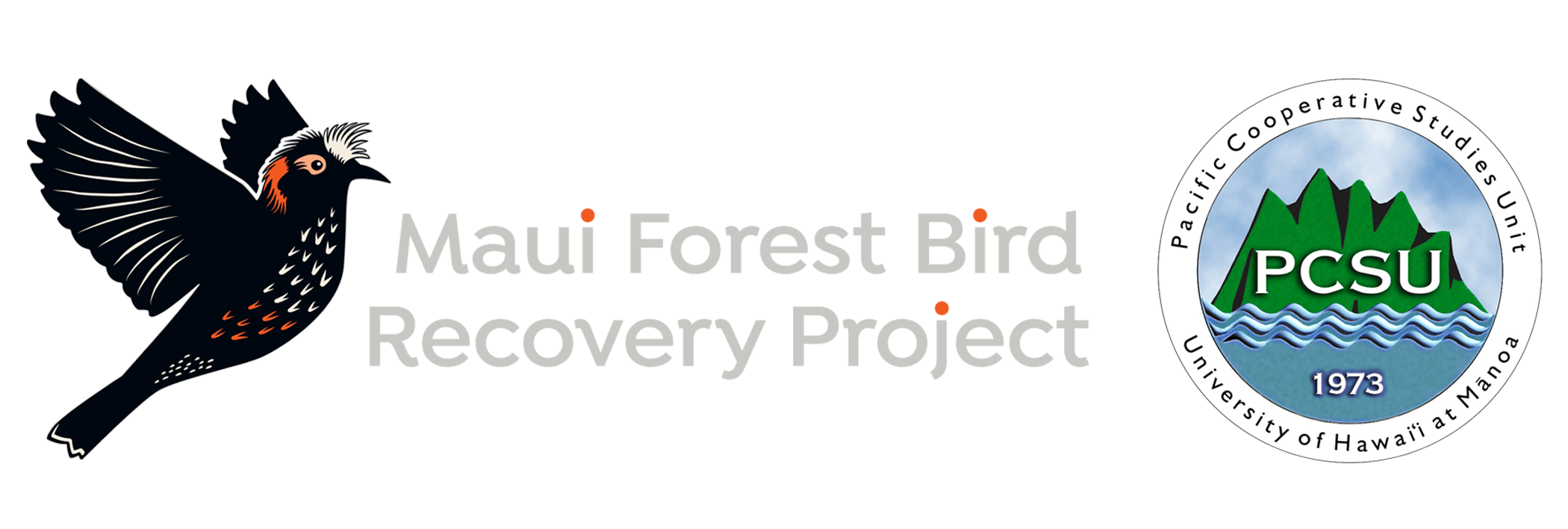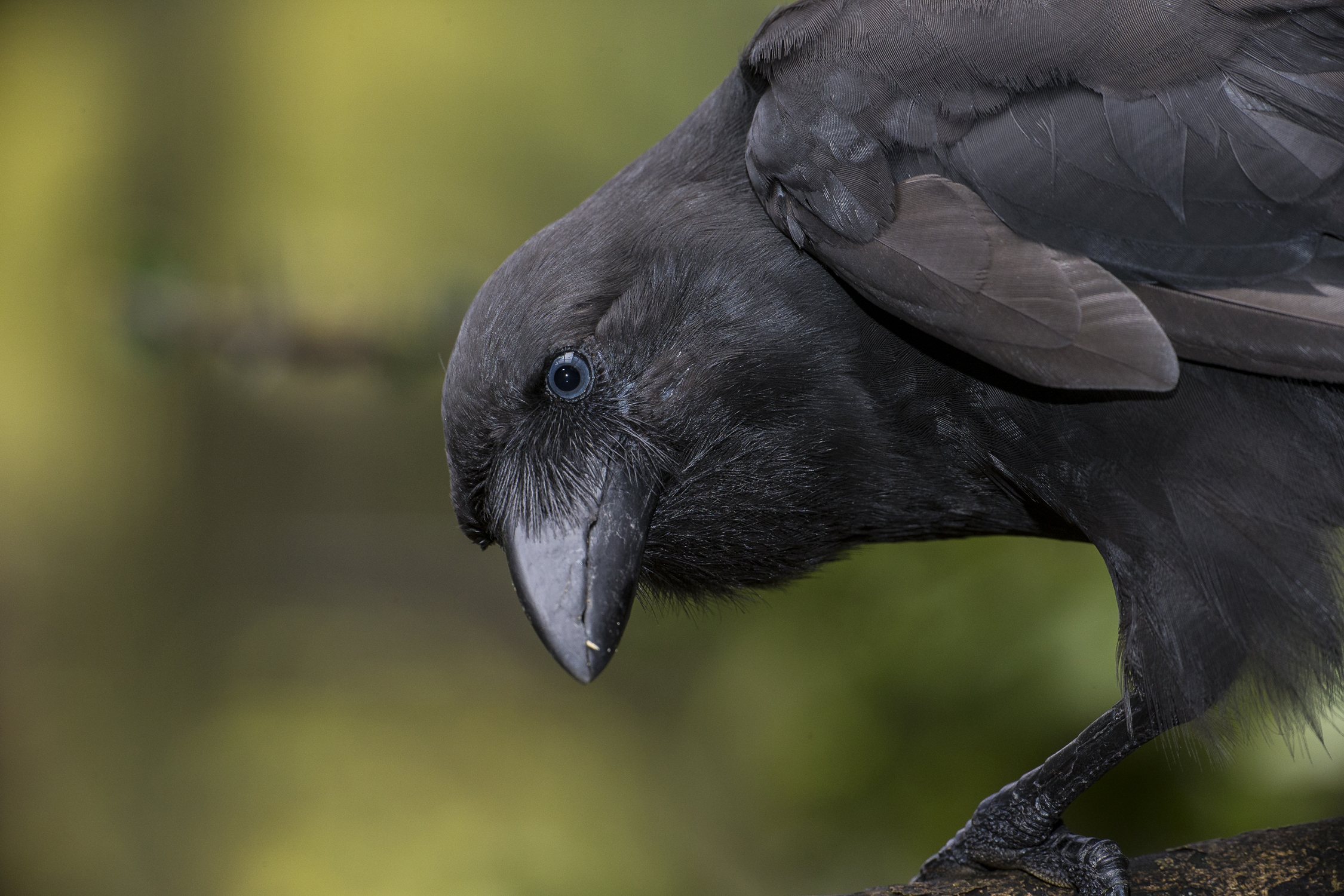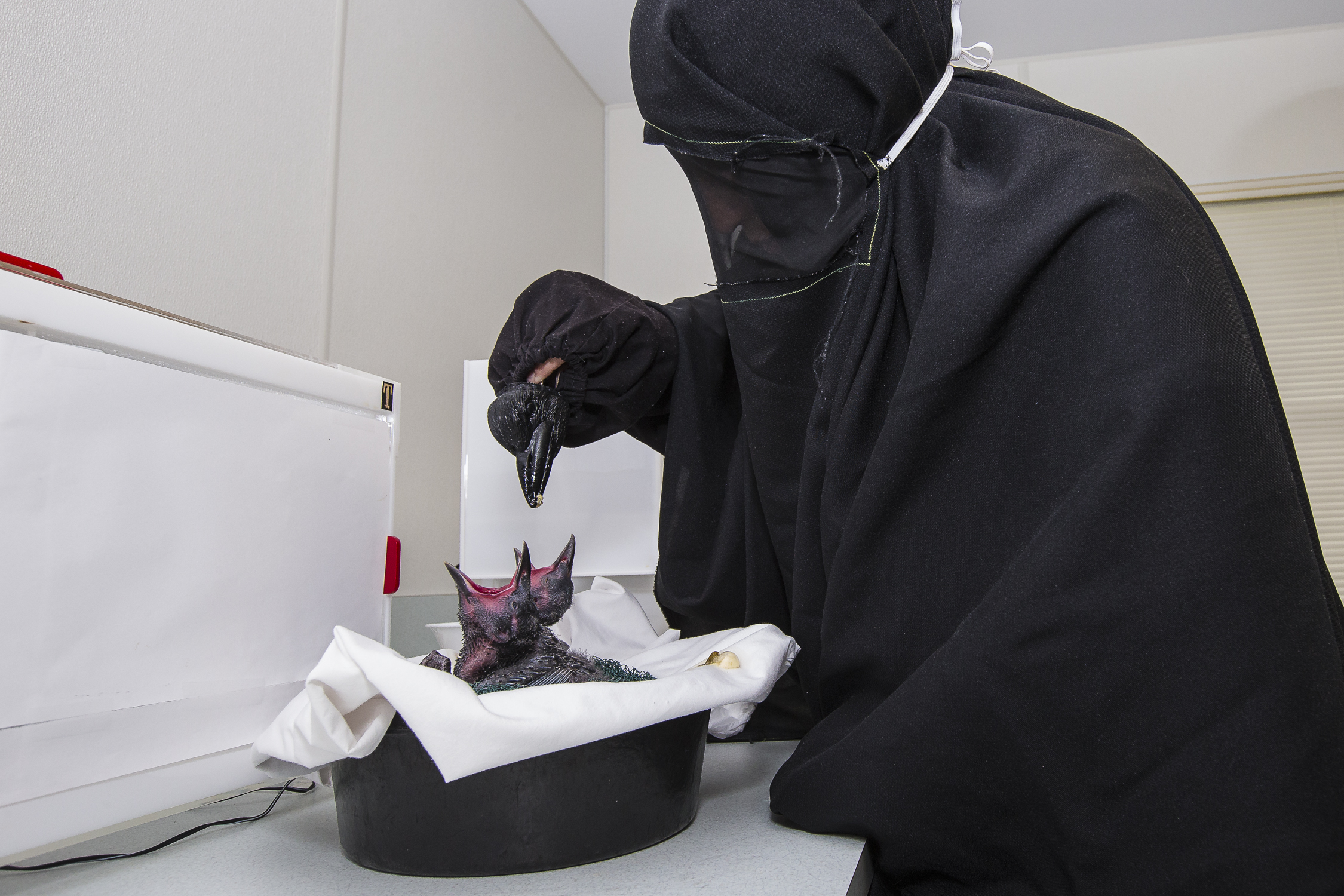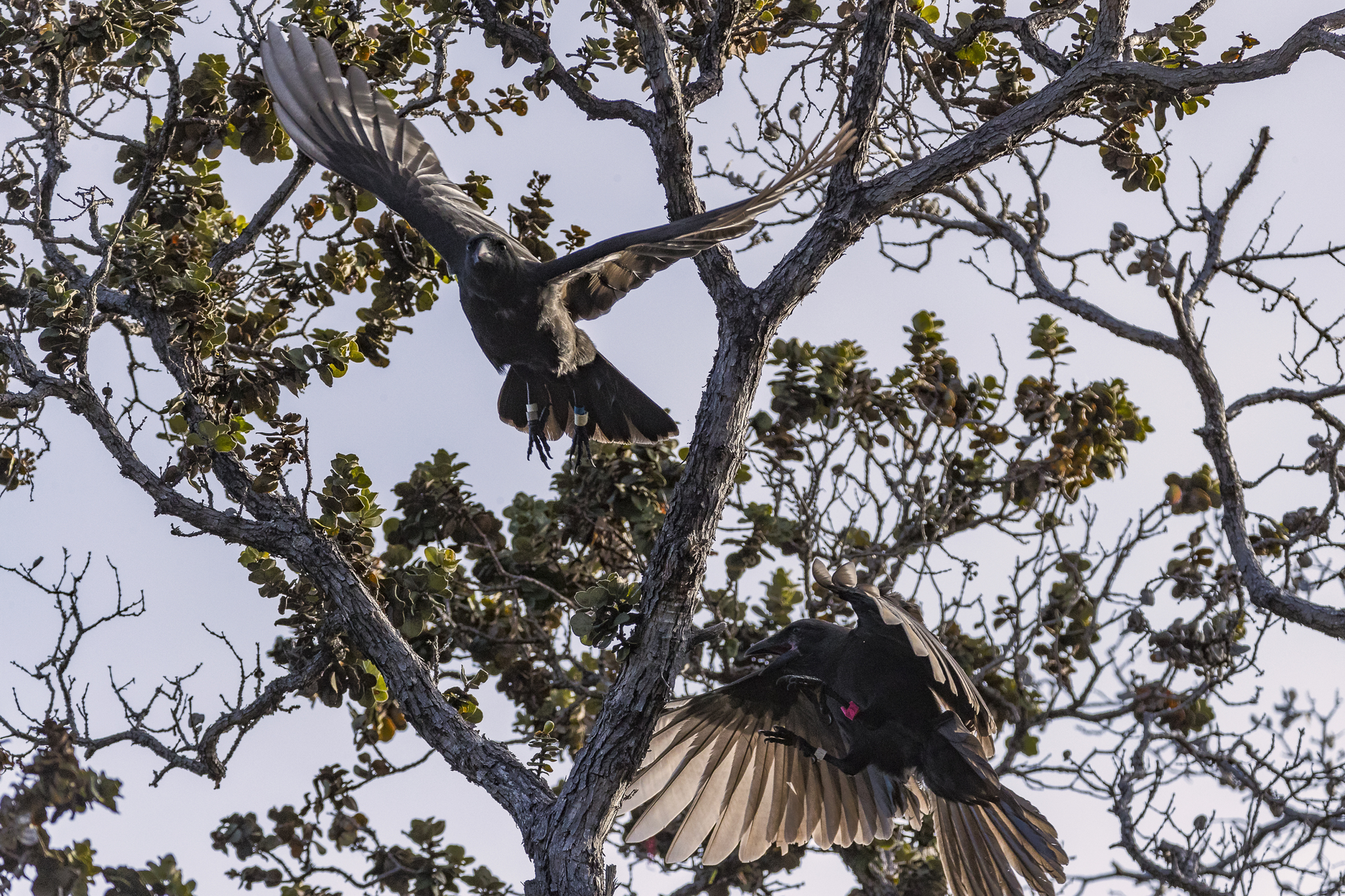ʻAlala
ʻAlalā; Corvus hawaiiensis
ʻAlalā are the sole surviving member of a remarkable group of five endemic corvid species once found on at least four of the Hawaiian Islands. ‘Alalā do not exist anywhere else on the planet and evolved with the plants, animals, and culture of Hawaiʻi. ʻAlalā were historically known to eat over 30 species of native fruits, making them an important seed disperser for native plants. An omnivore, ʻalalā also eat insects, and eggs and/or nestlings of other birds. Their diet can also include nectar, flowers, and dead animals.
‘Alalā are the largest and one of the most charismatic and culturally significant Hawaiian forest birds with black feathers and large bills. They weigh about 1 pound and are over 1.5 feet long from bill to tail with approximately a one-foot wide wingspan. Very intelligent and by far the loudest birds in the forest, they make incredible human-like cries, screams, and moans.
To learn about the conservation partnership, The ʻAlalā Project, working to restore Hawaiʻiʻs native crow to the wild click here.



